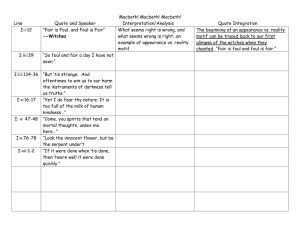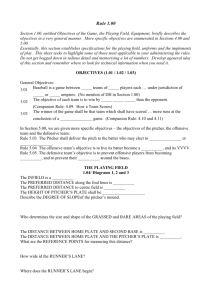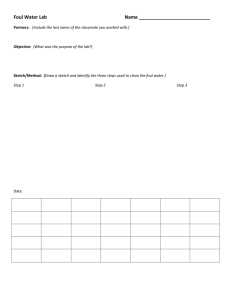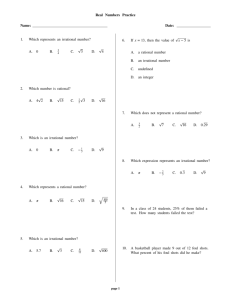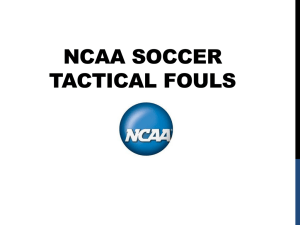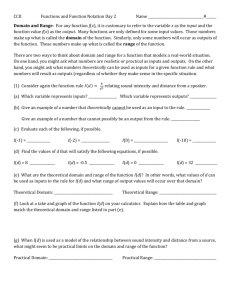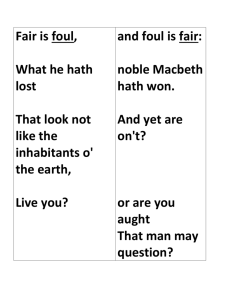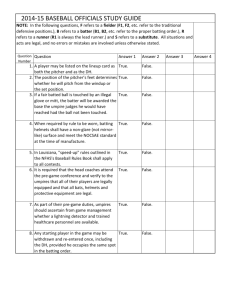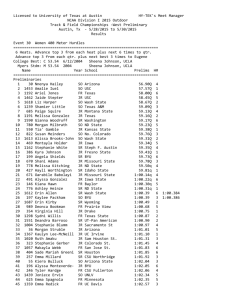fair foul in the batters box - Inland Baseball Umpires Association
advertisement
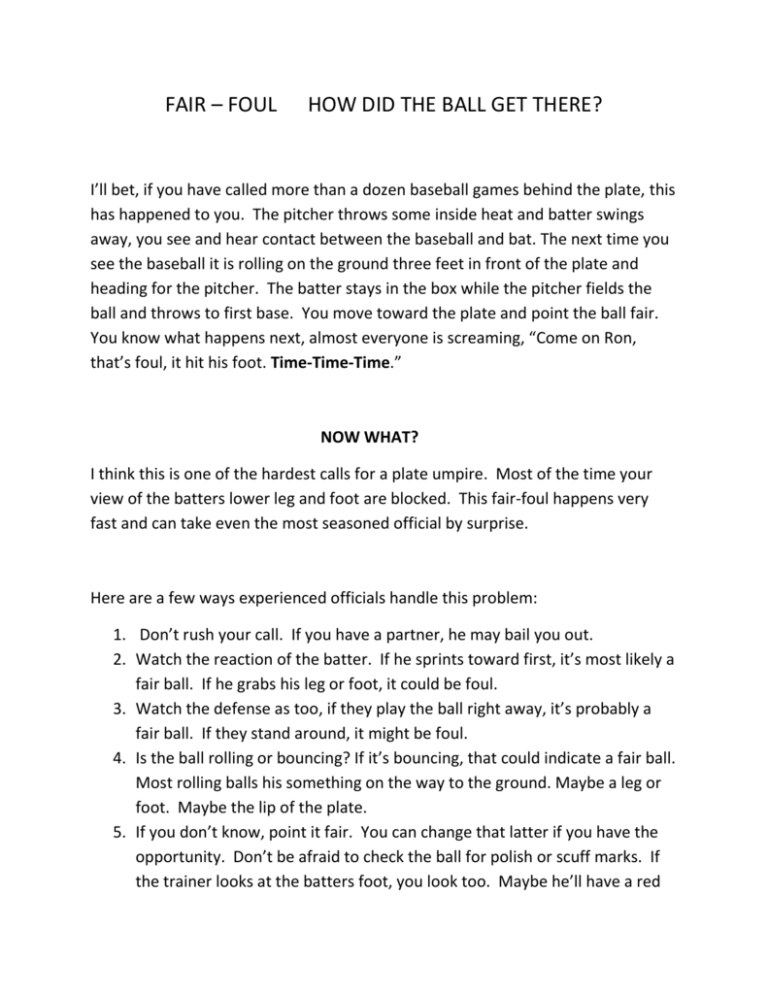
FAIR – FOUL HOW DID THE BALL GET THERE? I’ll bet, if you have called more than a dozen baseball games behind the plate, this has happened to you. The pitcher throws some inside heat and batter swings away, you see and hear contact between the baseball and bat. The next time you see the baseball it is rolling on the ground three feet in front of the plate and heading for the pitcher. The batter stays in the box while the pitcher fields the ball and throws to first base. You move toward the plate and point the ball fair. You know what happens next, almost everyone is screaming, “Come on Ron, that’s foul, it hit his foot. Time-Time-Time.” NOW WHAT? I think this is one of the hardest calls for a plate umpire. Most of the time your view of the batters lower leg and foot are blocked. This fair-foul happens very fast and can take even the most seasoned official by surprise. Here are a few ways experienced officials handle this problem: 1. Don’t rush your call. If you have a partner, he may bail you out. 2. Watch the reaction of the batter. If he sprints toward first, it’s most likely a fair ball. If he grabs his leg or foot, it could be foul. 3. Watch the defense as too, if they play the ball right away, it’s probably a fair ball. If they stand around, it might be foul. 4. Is the ball rolling or bouncing? If it’s bouncing, that could indicate a fair ball. Most rolling balls his something on the way to the ground. Maybe a leg or foot. Maybe the lip of the plate. 5. If you don’t know, point it fair. You can change that latter if you have the opportunity. Don’t be afraid to check the ball for polish or scuff marks. If the trainer looks at the batters foot, you look too. Maybe he’ll have a red spot on his foot or leg. You can always change a fair to a foul, but not foul to fair. 6. When you call it foul, do so with confidence. Make the foul signal with your hands and a loud verbal foul call. (it is OK to repeat the verbal call a couple of times) Then point emphatically toward the batter’s box and say “it hit him in the box”. Most of the time, if you sell it hard you will escape unscathed. When you are the base umpire in this fair-foul situation, give the plate umpire a couple of beats to make a foul call. If after a beat or two, the plate umpire does not call the foul, its up to you to do so. For me to make this type of a foul call from the interior of the diamond or down the first base line I have to be 100% certain of the foul. More than once I have seen good base umpires kill the play when the ball came nowhere close to the batter. When you are the plate umpire and you point the ball fair and your partner does not call foul, you are on your own. When the head coach comes out and asks you to get help, there is no reason to go to your partner. I usually explain to the coach that if my partner had it foul, he would have killed it. I almost never have a conference in this circumstance. I already know that my partner has no information for me. At this point, to have a conference, shows a lack of confidence. (You may disagree) These are just some of my thoughts on the subject. I would love to hear yours. I can always use the help. Ron

